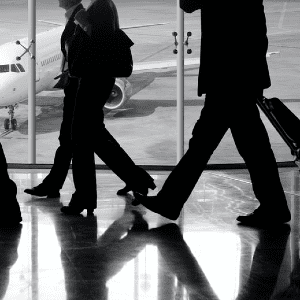 During his recent conversation with Ryan Embree for the Hospitality Trailblazers series on the Suite Spot podcast, President and CEO Charles E. Oswald talked through his trends and predictions for 2024. Here, Charles expands on those thoughts.
During his recent conversation with Ryan Embree for the Hospitality Trailblazers series on the Suite Spot podcast, President and CEO Charles E. Oswald talked through his trends and predictions for 2024. Here, Charles expands on those thoughts.
In the ever-evolving business travel landscape, we observe significant shifts in market trends. Currently, there’s a general softening in leisure travel trends coupled with an improvement in business travel. These changes are critical as we adapt and strategize for the future.
Key indicators that are paramount in our analysis include office utilization trends and air traffic, both of which offer valuable insights into the behavior of business travelers. Notably, air traffic has commendably recovered to levels above those of 2019. However, office utilization presents a contrasting picture, hovering below 50% of the figures seen in 2019. Interestingly, office lease rates are maintaining a strong position, sitting around 96% indexed to 2019. This data is instrumental in shaping our approach to hotel management and services.
It’s essential, however, to approach these statistics with caution, especially when discussing national trends. The reason is that each market possesses its unique characteristics and trends. For instance, markets like Miami, Phoenix, and Austin are witnessing office lease rates and utilization that have largely recovered, or even surpassing the levels seen in 2019. On the other hand, cities such as San Francisco, San Jose, and Philadelphia are significantly lagging. Conversely, while leisure travel is softening in regions like South Florida, we’re experiencing an uptick in Asian leisure travel in West Coast cities like San Francisco.
The corporate environment is also undergoing a notable shift. Many Fortune 100 companies are actively calling their employees back to the office. In mid-2023, we saw prominent companies like Oracle, Dell, Capital One, Google, Citigroup, and AT&T reintroducing three days a week office patterns. This trend continued into the last trimester of 2023, as companies like Goldman Sachs, Apple, Blackrock, Meta, Cigna, Comcast, and FedEx mandated office time. As we roll into the first quarter of 2024, the momentum continues with companies like USAA and others also transitioning back to office environments.
These changes are in response to the realization among companies that the remote and hybrid work period caused the US corporations to experience a record loss in employee labor productivity. The Bureau of Labor Statistics reported a 1.9% decline over the past two years, marking the sharpest decline on record. This statistic is a clear indicator regarding the relevance of in-person collaboration as is the hallmark of the traditional work environment.
With the gradual “normalization” of labor conditions, we’re witnessing an increase in small, corporate group meetings. The transient business growth trend and shorter length of stay pattern are also noteworthy. Many workers who relocated during the pandemic are now part of a new dynamic, which might lead to an increased need for short-term accommodation as they comply with new office mandates. This presents both challenges and opportunities for our industry, and we are strategically positioned to adapt and thrive in this changing environment.
















